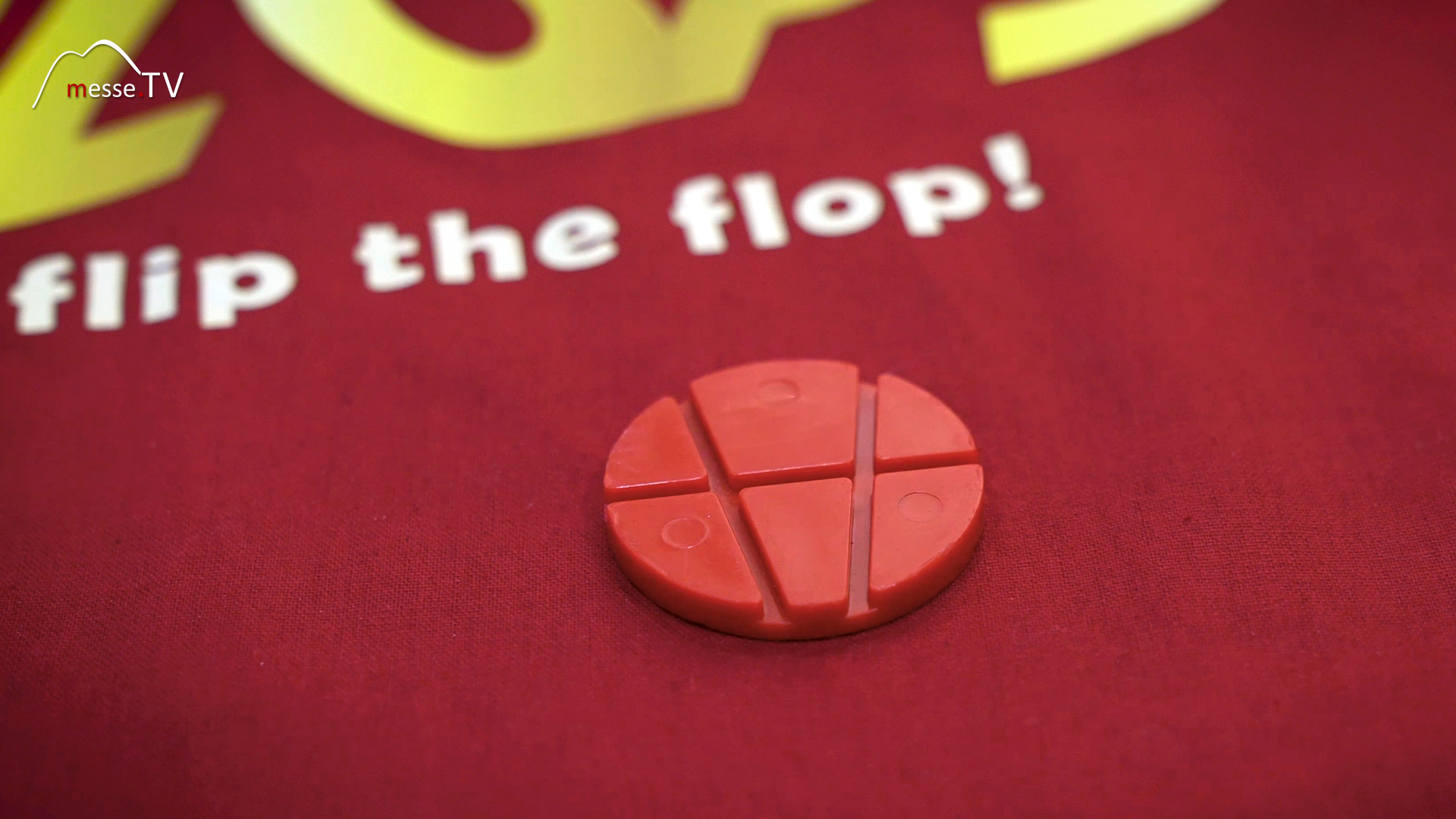Flops' product universe can be described as a "phygital universe", as it features both physical, i.e. haptic, components and digital ones. But what exactly does this mean? We asked at the toy fair and had the main features of the game concept explained to us.
The idea was born during the dreary pandemic years. Maria Gundersen set herself the task of getting children outside to play when they were clearly too old to play in the sandpit. Flip the Flop can be played in 2 ways. Play mats, corresponding buttons with different figures and holders, in which different grooves are carved to hold the buttons to be played with, serve as the basis. In the conventional way, the player flips his button onto the stacked pieces on the mat and the one that remains on top can be placed in the holder. The second variant is a further development. Here, the horizontal button in a holder must be flicked onto the opponent's vertical button with the fingertips. A great pastime for younger children!


Flops offers an entire universe to reach every age group. Flops is currently developing an app based on AI and AR. This allows the figures recorded on the buttons to be scanned and awakened with the help of augmented reality. They can fight and connect with friends via bluetooth. Each character has an animal spirit. If you scan Milo the cat, for example, he becomes a digital character - just like a digital Tamagotchi on your smartphone.
Flops has also come up with something for older children and teenagers. WEB 3 is the name of the magic tool with which the Norwegian company is targeting this age group. The aim is to reach a global audience and 15,000 followers have already signed up. WEB 3 is intended to connect the community with the magicians' universe. The Flops variant "Connection via WEB 3 with the Magis Universe" can also be devoted to young people and not infrequently adults due to its more adult attitude.